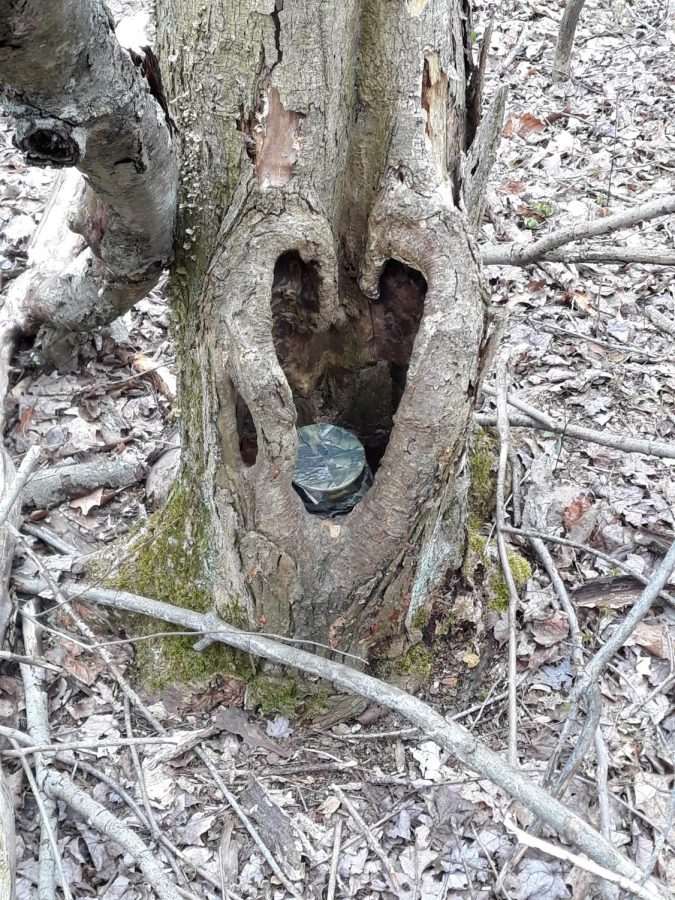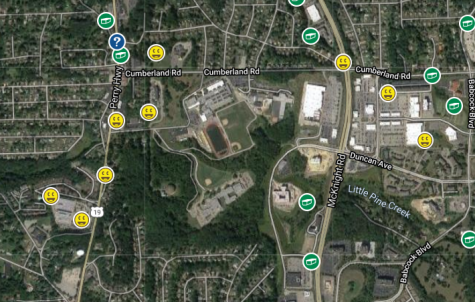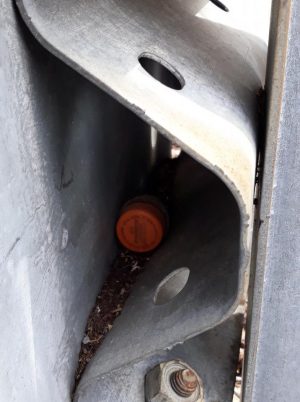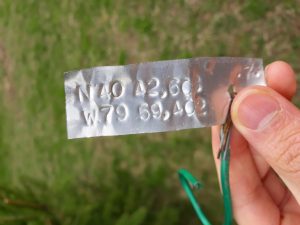Geocaching – The Hunt of a Lifetime
Just because a stay-at-home order is in place doesn’t mean that you can’t get any exercise.

Geocaching is an international “treasure hunt” that provides a great escape from confinement indoors. The game’s premise is simple: using a phone or other GPS device, “cachers” search outdoors in a variety of locations – ranging from the woods to guardrails – for a container that holds a logbook to sign. Once this is accomplished, the player is then also entitled to log their visit online. Geocaching has been around for years, but it is an especially appealing option for outdoor activity during the present time. Geocaches in the woods are usually quite secluded, decreasing the chance of you coming into contact with others while out enjoying the fresh air. As long as you are cautious and respectful to others, geocaching provides a great option for getting outside and increasing the quality of our mental and physical health, regardless of the time of year or current global situation.

Some students at NAI may be somewhat familiar with geocaching due to playing it in their gym classes, but that format of looking for geocaches gives only a glimpse into the many aspects that make it an enjoyable activity. Most importantly, the geocaching that is taught in Physical Education classes lacks the component that is the most rewarding in the search for a geocache – the presence of an actual physical container. Once you attain the coordinates of a cache – either by downloading them to your GPS from the geocaching.com website or through the geocaching mobile app – you are able to begin your search. The app is helpful in that it requires no preparation before leaving the house, allowing you to look for caches on-the-go. However, experienced “cachers” will find an appreciation in the online portal, which provides a higher number of statistics for their profiles as well as more complex capabilities than the app does.

The hunt itself is the greatest fun in geocaching! Using the information given by the creator of the geocache – a difficulty and terrain rating from 1-5, as well as a container size and possibly a hint – you must use a compass to close the gap between you and the geocache. Once you reach the general area of the hide, the cache might be easy and one that you find in minutes or a more difficult search that requires you to look in a variety of places. Remember, when outside in the woods, there is all manner of locations that a geocache can be hidden – under logs, hanging from trees, in tree stumps, and so on!
The geocache container is typically a small plastic Tupperware container or pill bottle, although many are larger metal ammo cans. The most fun caches are more imaginative; I’ve seen everything from plastic grasshoppers to fake rocks with the log inside! There are even “gadget caches” with large containers that are easy to find but require a high amount of thinking to figure out how to open them. Similar in concept but more common are various “fake-out” caches that are designed to blend in with their environment, such as a magnetic bolt attached to a guardrail that is actually the cache container! Depending on the geocache size, you will find the logbook, where cachers sign their names; assorted trinkets, which are intended to be traded for similar items; and maybe Travel Bugs, items that are moved from cache to cache and logged online, some with a goal in mind to visit a certain number of states or visit a specific world location.

This type of geocache, the Traditional Cache, is the most common. However, there are many other geocache formats, and some of them are still prevalent along with Traditional hides. Multi-caches are almost like multiple hides in one; the given coordinates lead to the first of a set number of “stages,” in which, instead of a container, you will find a sign providing the coordinates to the next stage. This will then repeat itself, with these coordinates leading to another label with coordinates, or you will find the final container at the next stage. Multi-caches can be as short or as lengthy as the cache owner decides, but most have somewhere between 2-5 stages. The third-most-common geocache is the Unknown Cache, alternatively referred to as a puzzle cache. The coordinates given in the descriptions of these caches are only placeholders – the actual container is located at a nearby but different place.

You have to figure out the coordinates by using clues in the cache description. Due to the anti-repetitive nature that makes puzzles effective, no 2 puzzle caches are solved in the same way (with the notable exception of hiding the coordinates in white text*). Ciphers, pop culture trivia, and hidden information in pictures are all fair game in these challenges. Because of the extra step required to figure out the puzzles for these hides, Unknown Caches are not found near as much as Traditional Caches and Multi-caches, but this extra step also doubtlessly makes them the most satisfying type of geocache to attain.
Geocaching is a game that requires cache owners to trust cachers to take care of their hides, so practicing the proper etiquette is crucial in your searches. Always leave a cache hidden better than you found it by covering the container with bark or some other type of natural covering. Although most caches have a piece of paper that informs the reader about the basics of geocaching, caches are lost every week due to tampering – intentional or otherwise – by someone who didn’t know any better due to his or her lack of awareness about the game. If you take a Travel Bug, move it along to another cache as soon as possible. They are not meant to be kept as souvenirs. When logging a cache online, try not to give spoilers as to its location, and try to remember to thank the cache owner.

As you can see, geocaching is a complex adventure that can provide hours of enjoyment at any time – provided, of course, that it’s good weather outside… but bad weather is a great opportunity to work on cracking puzzle caches! Especially during a time when meeting with others and taking part in many traditional recreational sports is frowned upon, geocaching is an appealing option that gives structure to an outdoor experience while allowing for the necessity of isolation. If you find yourself going for a walk in North Park, download the Geocaching app and see if there are any nearby hides. With countless caches in the North Hills of Pittsburgh alone, there’s no excuse to not leave the house and begin your search today! Who knows – you might just find yourself pursuing a new hobby that could benefit your health.
*This is an example of hiding coordinates in white text. Thanks for reading!*

Andrew McLaughlin is a ninth-grader at North Allegheny Intermediate. He formerly was the editor on the student newspaper at Carson Middle School and enjoys...


Linda Britt • May 1, 2020 at 3:36 pm
A very well-written article, Andrew. Geocaching has many different avenues to travel that you explained so well!